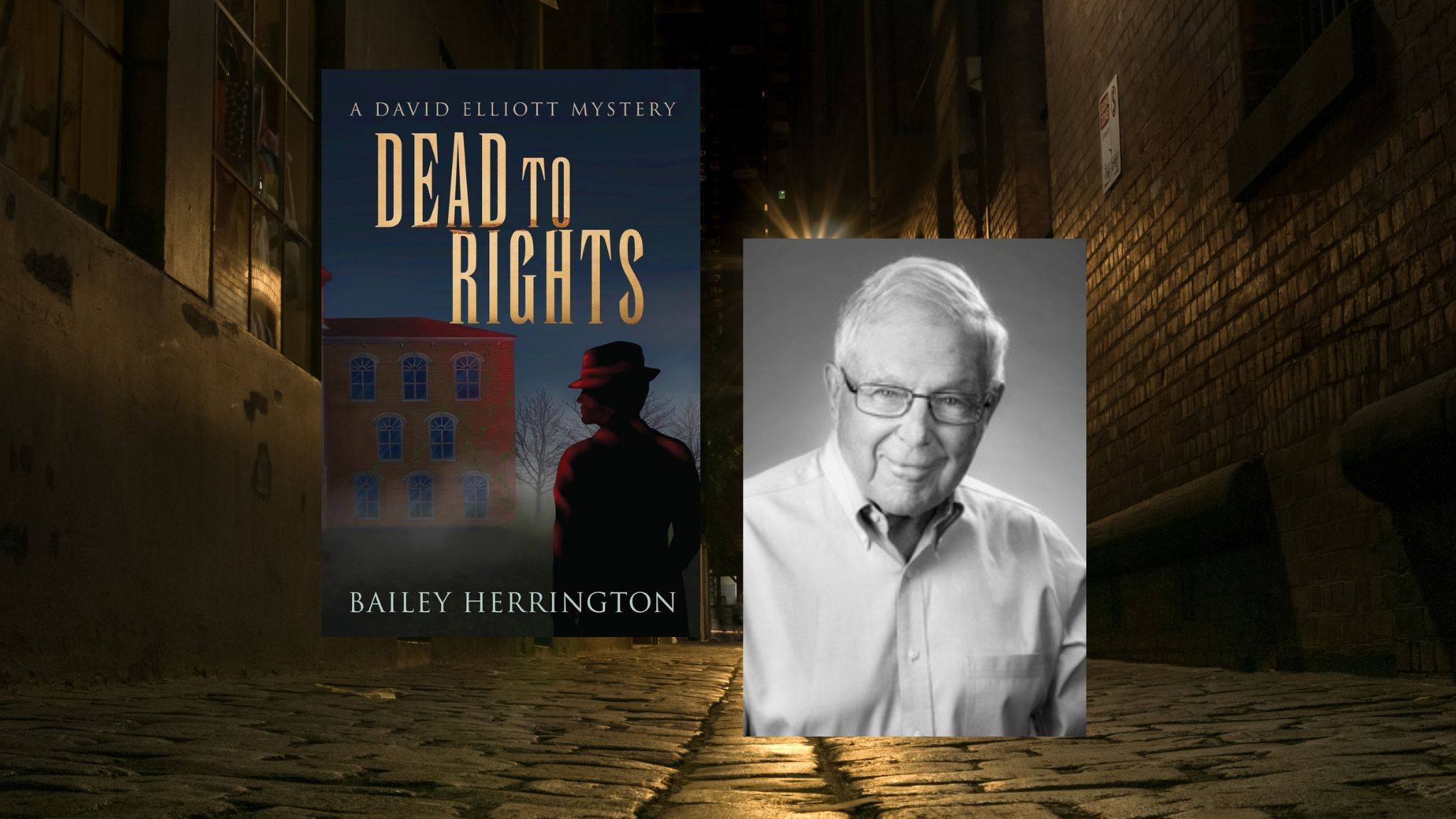1953. David Elliott is a college sophomore American Literature major who also plays baseball and has a propensity to jump into things without looking. When his revered professor Steven Jeffrey ostensibly commits suicide, David receives a coded letter from him a day later. With the help of his cousin Judy, David is determined to decipher the message and make it public. However, they quickly become entangled in intrigue, murder, and peril masterminded by a cadre of CIA operatives.
This is the plot of Bailey Herrington’s new fast-paced and thought-provoking thriller DEAD TO RIGHTS. Featuring plenty of suspense and commentary on issues that still resonate in our society today, the book will appeal to readers who enjoy mystery novels sprinkled with political and social commentary. A similar reading experience to the “Mr. and Mrs. North” series by Richard and Frances Lockridge.
In the interview below, Herrington pulls back to the curtain on the writing process behind the novel and its significant inspirations.
1. Where did the idea for “Dead to Rights” come from?
While doing preliminary research for story/plot ideas, I found the true story of the murder of Frank Olson, an American citizen born in 1910, who was one of the first scientists to work at Fort Dietrick, the Army’s biowarfare laboratory in Frederick, MD. After witnessing several brutal interrogations conducted by CIA agents in the years following World War II and the beginning of the Korean War, Frank Olson confided to a colleague that he was going to leave the agency. The CIA assassinated Olson in 1953. Intrigued, I decided to use Frank Olson’s murder as the framework for the story of Dead To Rights.
2. University setting in the 1950s — the venue and time period are almost a
character onto themselves. How does that setting play into the storyline?
I agree that the setting of a small liberal arts college and the 1950s may be considered as characters in Dead To Rights. I used Passavant College as a microcosm of life in America in the 1950s. The various threads of the story manifest themselves in the animosity of some students and “townies” toward two gay college seniors, in the self-righteous pronouncements of the college administration, the covert CIA operations and deadly response to those who attempt to reveal the truth about those activities, and the commonly-held view that the rights of those in authority override the rights of individuals. All are emblematic of the political, social, economic and cultural atmosphere prevalent during the decade of the fifties in the United States.
3. This is more than just a great mystery. What other important themes did you
want to develop in the story?
The difficult inner struggle one fights when brought face-to-face with long-held prejudices based on untenable assumptions. The outcome of the battle may have life-changing consequences. The courage required of individuals who risk everything for the truth. David Elliott asks, “How can we expect good, honest government to prevail if there’s no one willing to risk everything for the truth?” Characters in this story who exhibit this courage include Lawrence Clark, Steven Jeffrey and their families, George Dale, David and Judy Elliott.
4. How do some of those themes manifest themselves in today’s world vs. the
setting and time period for the book?
In some aspects of our society, an objective observer may declare that little has changed since the 1950s. Discrimination against and animosity toward individuals and groups who are the “others” because they are not one of “us” continues in our society today. Individuals who dare to speak truth to power risk harassment, death threats, and assassination. However, changes, both positive and negative, have happened in some instances: women’s roles have changed from housewives to increased opportunities to play a larger role in politics, science, healthcare, and education, to name a few. Changes in technology have had positive and negative consequences. Gun violence has increased since the ‘50s.
5. Tell us about your protagonist David Elliot. Who is he? What drives him?
And who, if anyone, was the inspiration for him?
In my first book of the David Elliott mystery series, David was a sophomore in high school. He exhibited typical teen behavior: resistance against parental authority, raging hormones, self-centeredness, and reckless judgment. I liked him for his quirky sense of humor, his stubborn determination to solve problems, and his innate integrity. In the three subsequent books, he matures, moving through the usual experiences of life, while retaining his sense of humor, determination, integrity, and reckless judgment. David is driven by a need to improve and
apply his abilities to the fullest. I used aspects and incidents of my life in creating David., omitting most of the stupid and embarrassing things I’ve done in life. My intention was to make David as authentic as possible.
6. What was the most difficult part of the book to write?
The ending. That is, deciding the best way to deal with David and Judy’s goodbye scene, given the impossible dilemma of their relationship. I changed it at least five times until I hit “Save” and turned off the computer. After a week, I reread it, corrected a typo, and pronounced it finished.
7. What do you hope readers take away from the book?
I hope readers will feel that they personally know and like some of the characters and will remember them long after the plot has been stored in a remote closet of their mind. I hope they were stimulated and entertained while providing them with a glimpse into what life in America was like in the 1950s.




